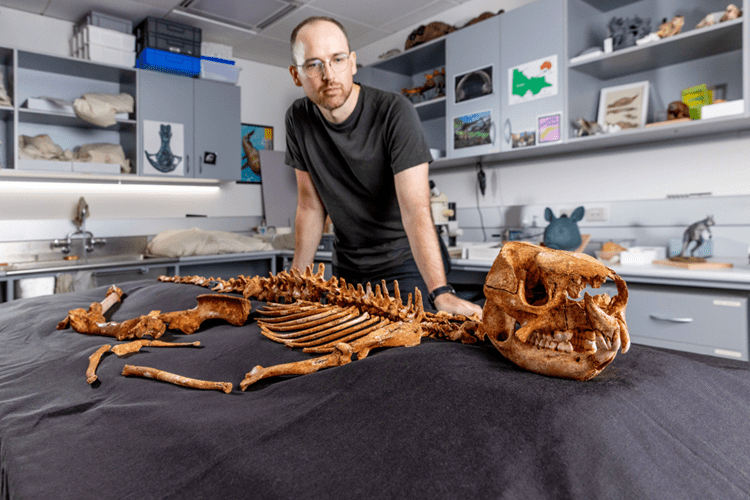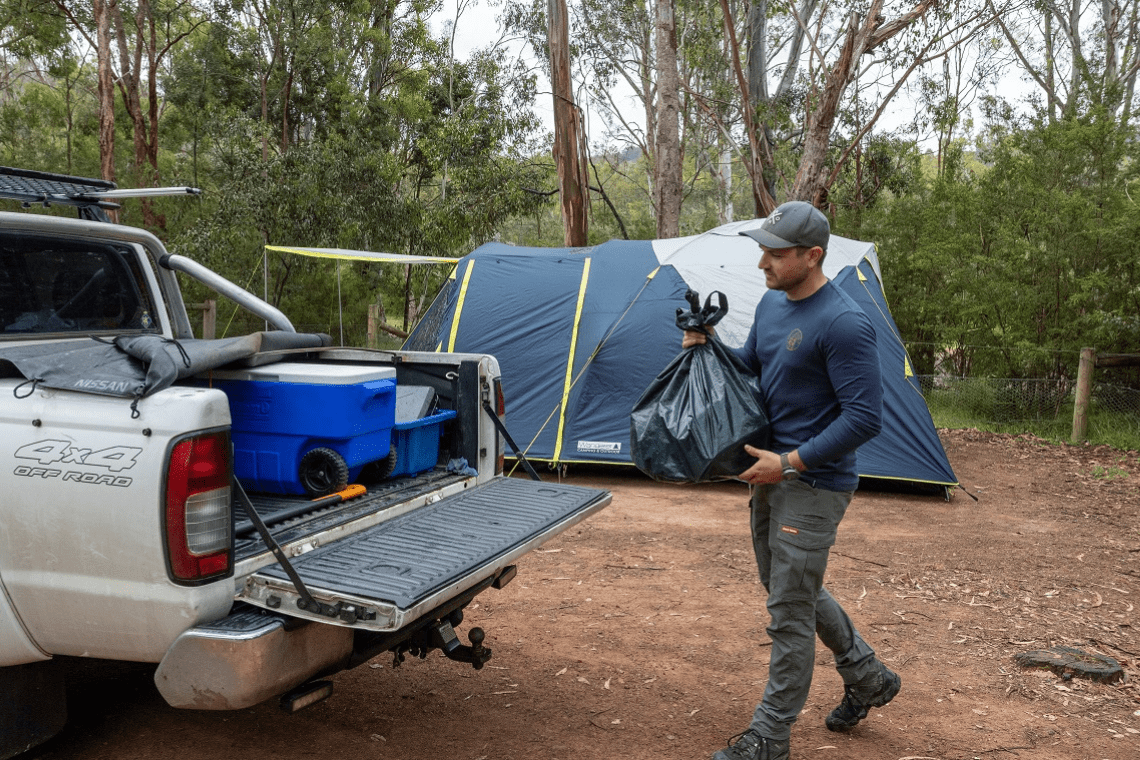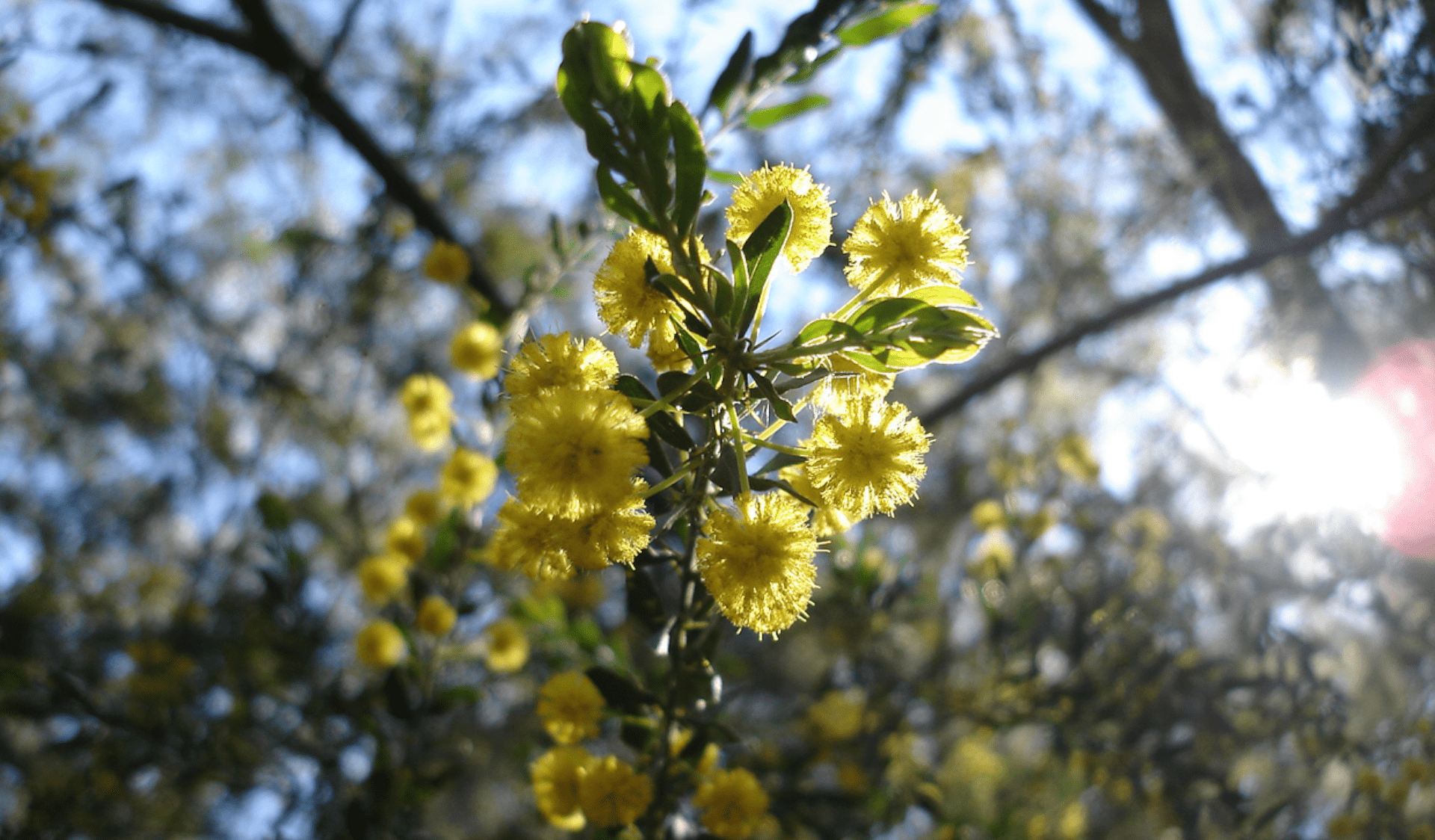From giants to ashes: the centuries old trees disappearing from Victoria's parks
Monday 15 April, 2024
Victorians cherish the crackling comfort of a wood fire – both at home as the days grow colder and under the starry skies of a remote campsite. But how many stop to think about the origins of the firewood they burn?
Firewood can be a cost-effective fuel for households, helping communities stay warm and fed, but it is also vital habitat for many of our native animals.
Both young and old forests play important roles in nature. Their bark and foliage create safe havens for spiders and lizards, while hollows in mature trunks offer nesting sites for birds, possums, gliders and bats.
Standing dead or dying trees (often called stags) provide homes for countless species. When they fall, logs and branches decompose slowly on the forest floor, creating coarse woody debris often mistaken for leaf litter. The dead wood creates a moist microclimate for amphibians, fungi and insects. It also provides shelter for small mammals and reptiles, and becomes a hunting ground for woodland birds and carnivorous marsupials.
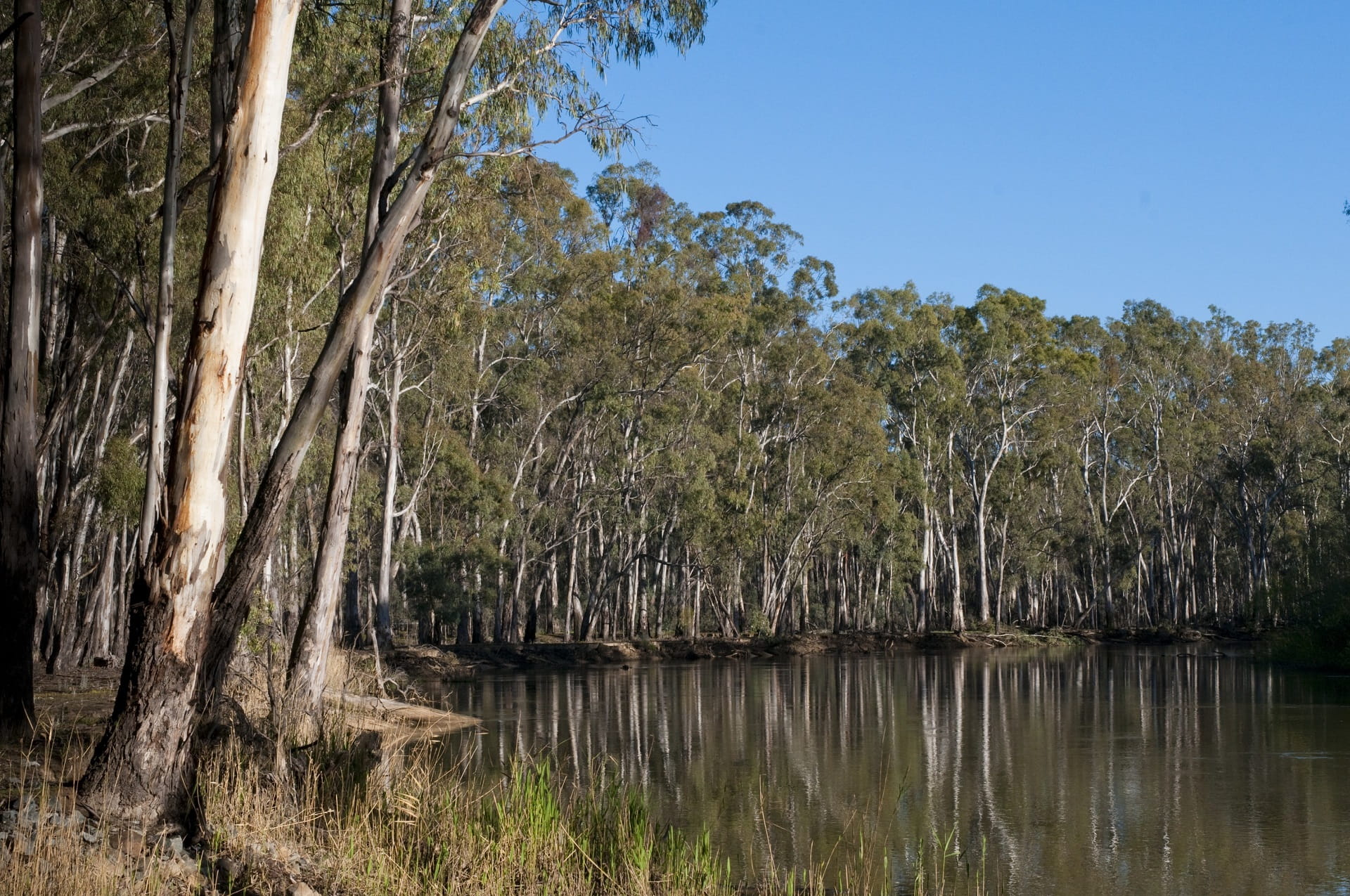
River red gums on the lands of the Yorta Yorta people in Barmah National Park - Parks Victoria
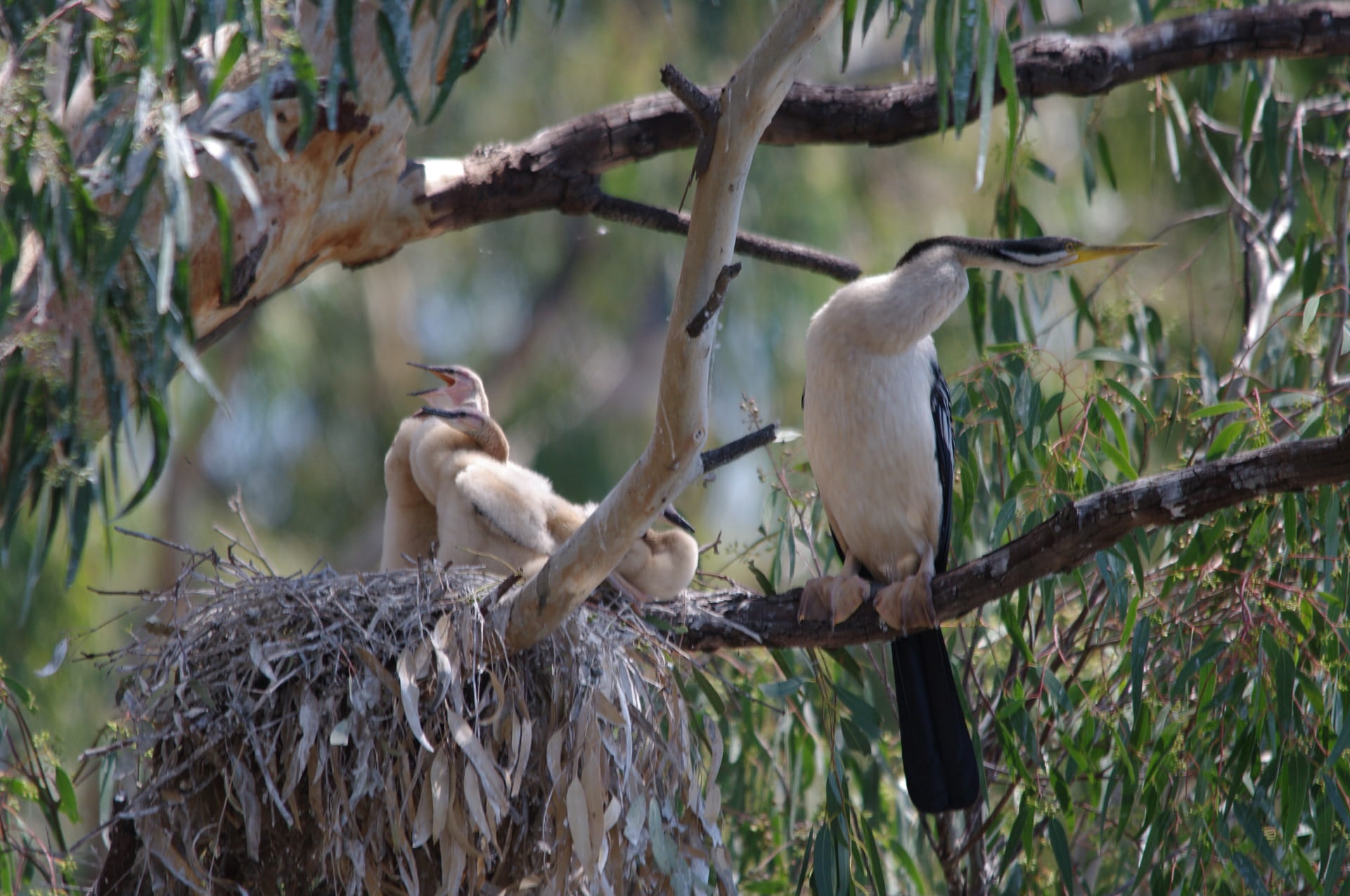
An Australasian Darter (Anhinga novaehollandiae) and its hatchlings in Barmah National Park - Parks Victoria
While green trees contribute significantly to carbon uptake in their early stages of growth, old giants can store enormous amount of carbon – keeping it out of the atmosphere – so long as they’re not cut down or burned.
Many types of firewood come from species in the eucalyptus family, including gums, boxes, ironbarks, stringybarks and peppermints. These trees evoke the classic sights, smells and sounds of the Australian bush.
Imagine the beauty of peeling bark revealing the smooth texture of an expanding trunk, or the invigorating scent of eucalyptus after a downpour. Think of the satisfying crunch of dry leaves underfoot, or native bird calls echoing from hidden hollows and overhead branches.
These sensory experiences are intricately linked to the trees that provide our winter warmth. Unfortunately, those oldest – and most important – to the land are being stolen at an alarming rate.
Detecting habitat destruction
Area Chief Ranger for Northern Hume, Eloise Seymour, says managing ongoing habitat destruction “takes a significant toll” on her team.
“We still talk about a case, a couple of seasons back, along the southern edge of Mansfield Swamp Wildlife Reserve. We found 10, large river red gums illegally cut and removed from the park. Bright red sawdust and stumps littered the swamp edge, along with scattered branches and logs.”
Mansfield Swamp Wildlife Reserve is part of an Aboriginal cultural landscape that includes the traditional Country of the Taungurung and Yorta Yorta peoples.
Some of the illegally felled gums in the reserve were up to 400 years old and their trunks were more than a metre thick.
“Old-growth habitat is rare here, which is why losing 10 giants felt like such a devastating blow – to us and the local community,” Eloise continues.
“A standing tree in the process of decay is incredible habitat to so many animals, especially birds and threatened squirrel gliders. Out here, it can take up to 150 years for one to develop a hollow.”
“To put that into context, we lost four generations in one night.”
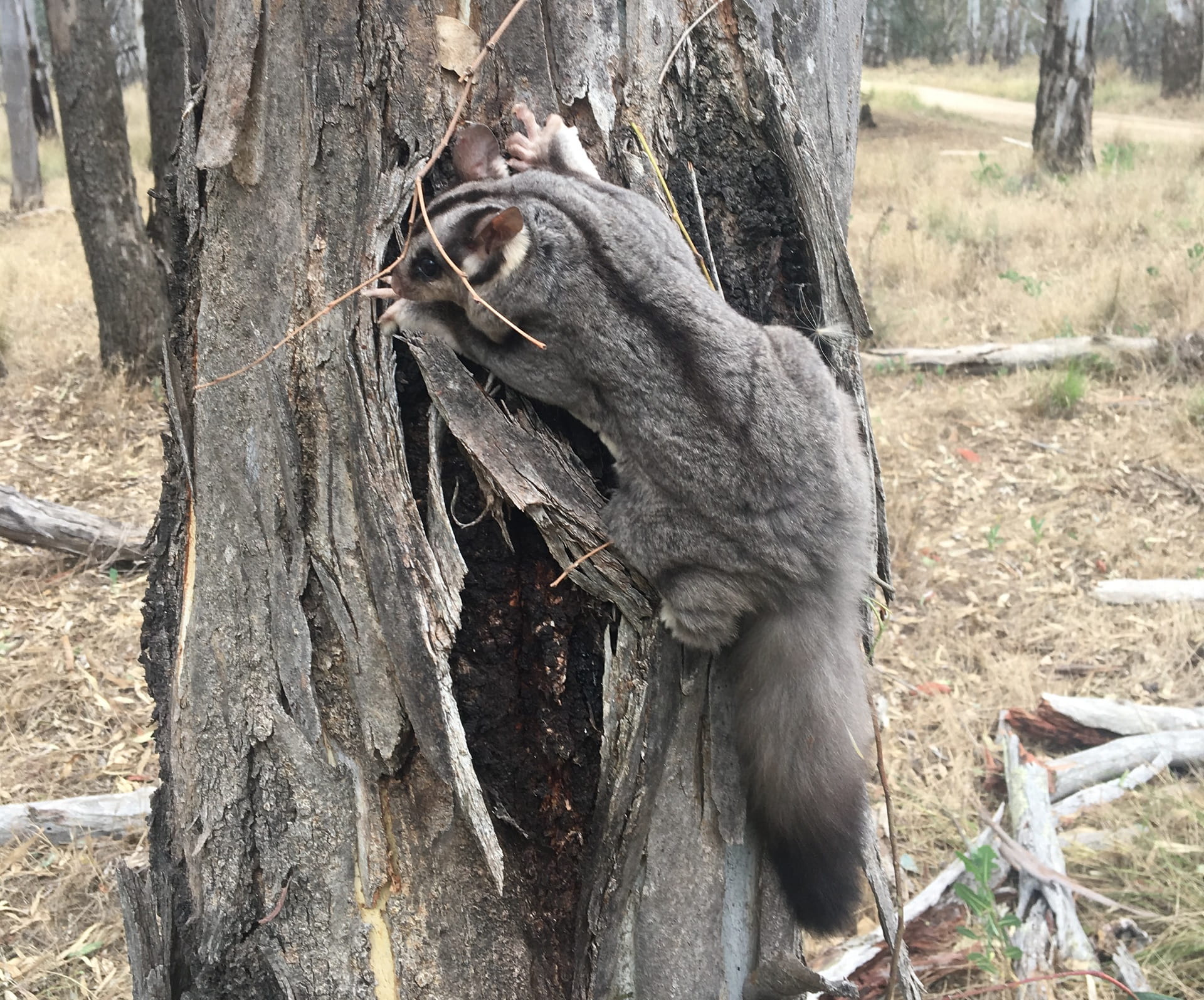
This squirrel glider (Petaurus norfolcensis) made a rare daylight appearance before scurrying hiding away in a nearby hollow ion the lands of the Yorta Yorta people in Lower Goulburn National Park - Parks Victoria
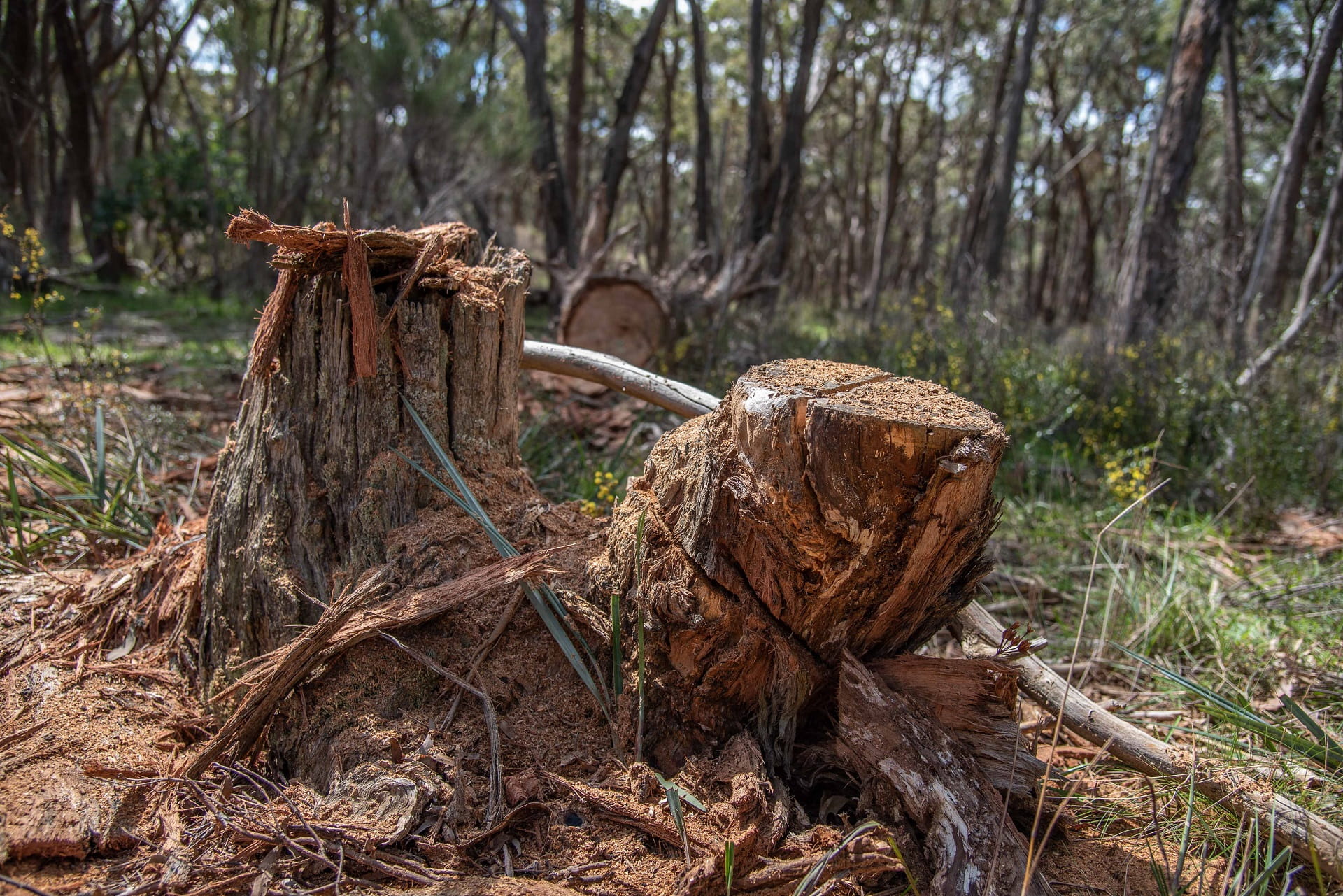
Exposed trunks following a case of illegal firewood theft - Jacque Quaine
Beyond offering tall and deep hollows, old trees develop sprawling canopies that become havens for native birds raising their chicks.
“When we started our investigation into this incident, my team uncovered the remains of a white-bellied sea-eagle nest on the ground,” Eloise recalls.
This bird species, scientifically known as Haliaeetus leucogaster, is listed as endangered in Victoria.
“Those nests are so, so rare to have in our parks up north and they’re usually such an incredible sight for us to see and record for conservation. Instead, my team had to document its loss. They were left wondering about the potential destruction of any eggs and the fate of the breeding adults,” Eloise continues.
“If they survived, it’s likely those birds will never return to this area.”
“It is hard not to hold onto that and take it home with you. How do you switch off?”
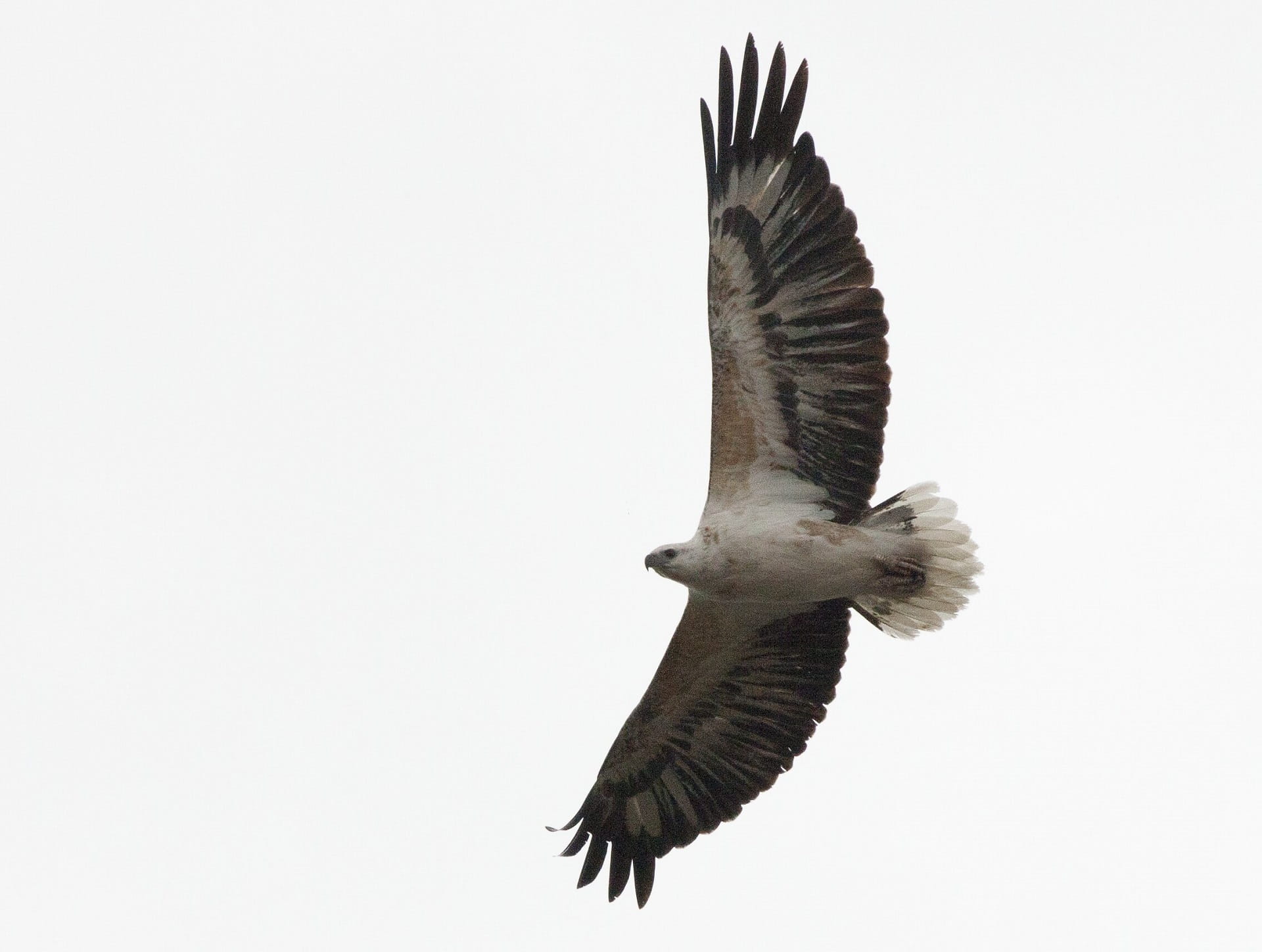
A white-bellied sea-eagle (Haliaeetus leucogaster) in flight - Museums Victoria
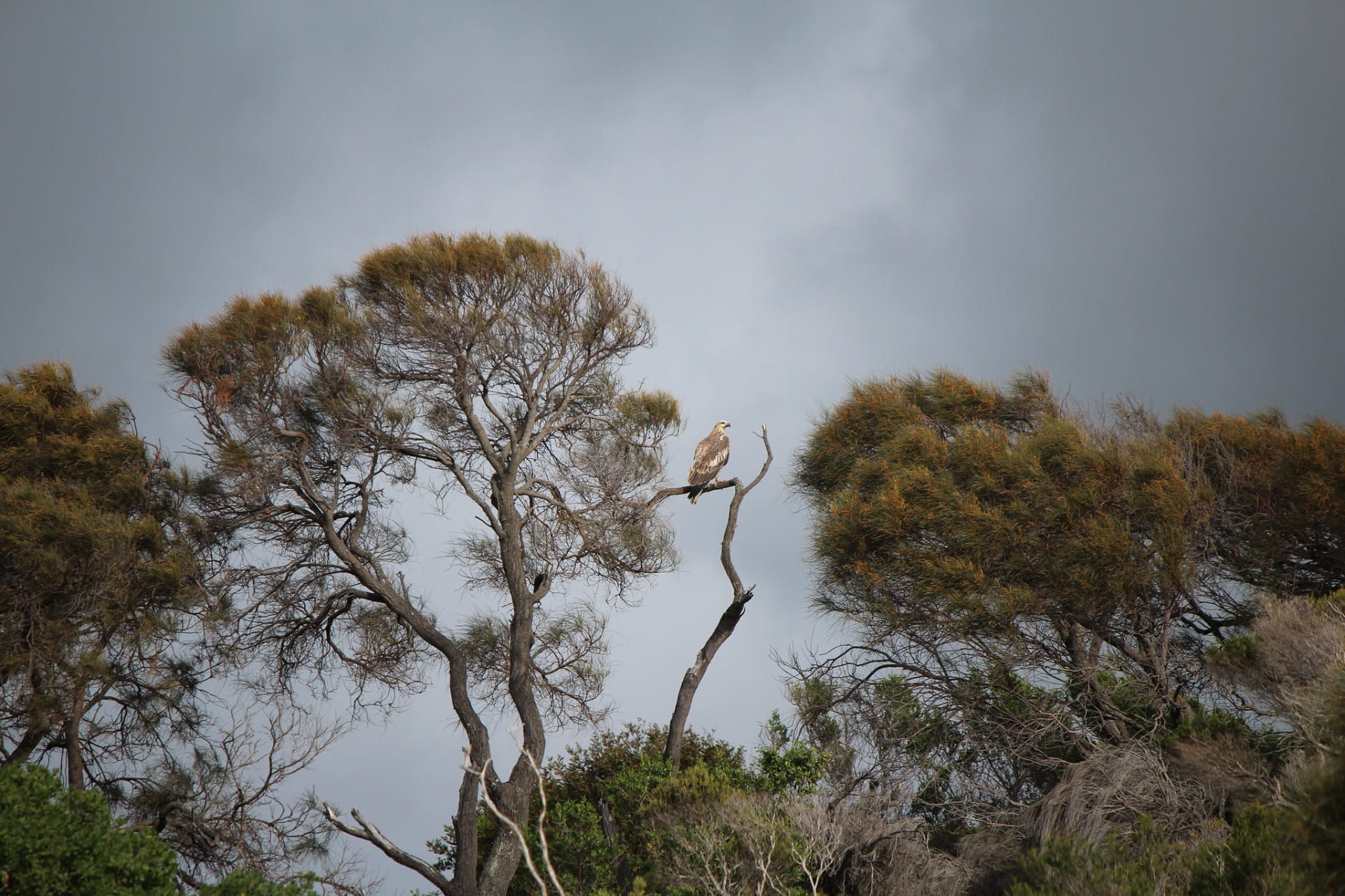
The sheer size of a white-bellied sea-eagle compared to the branches it perches on is a beautiful sight to behold - Creative Commons
Around the same time, several young trees also fell victim to illegal firewood theft.
Parks Victoria and the Conservation Regulator interviewed a Kyabram man for illegally cutting and removing seven young trees for firewood as part of a separate case.
A four-wheel-drive vehicle, tandem trailer, three chainsaws and lighting equipment were seized from the man.
“Sometimes, either in their hurry not to be caught or their inexperience with the environment, thieves will decimate a section of forest just for one tree that might sell,” Eloise says.
“If young trees have been taken in bulk, we know thieves stockpile them for sale in a year or two, because they need a lot of time to dry out.”
“We’ve also had situations where thieves will begin cutting a tree only to find it rotted all the way through. This wood is not valuable in the eyes of the illegal firewood trade, so they are often left to hang from nearby branches.”
“When logs are left hanging, we must call in contractors to remove them. Because they can drop at any moment, they become a hazard to visitors. It feels like such a waste.”
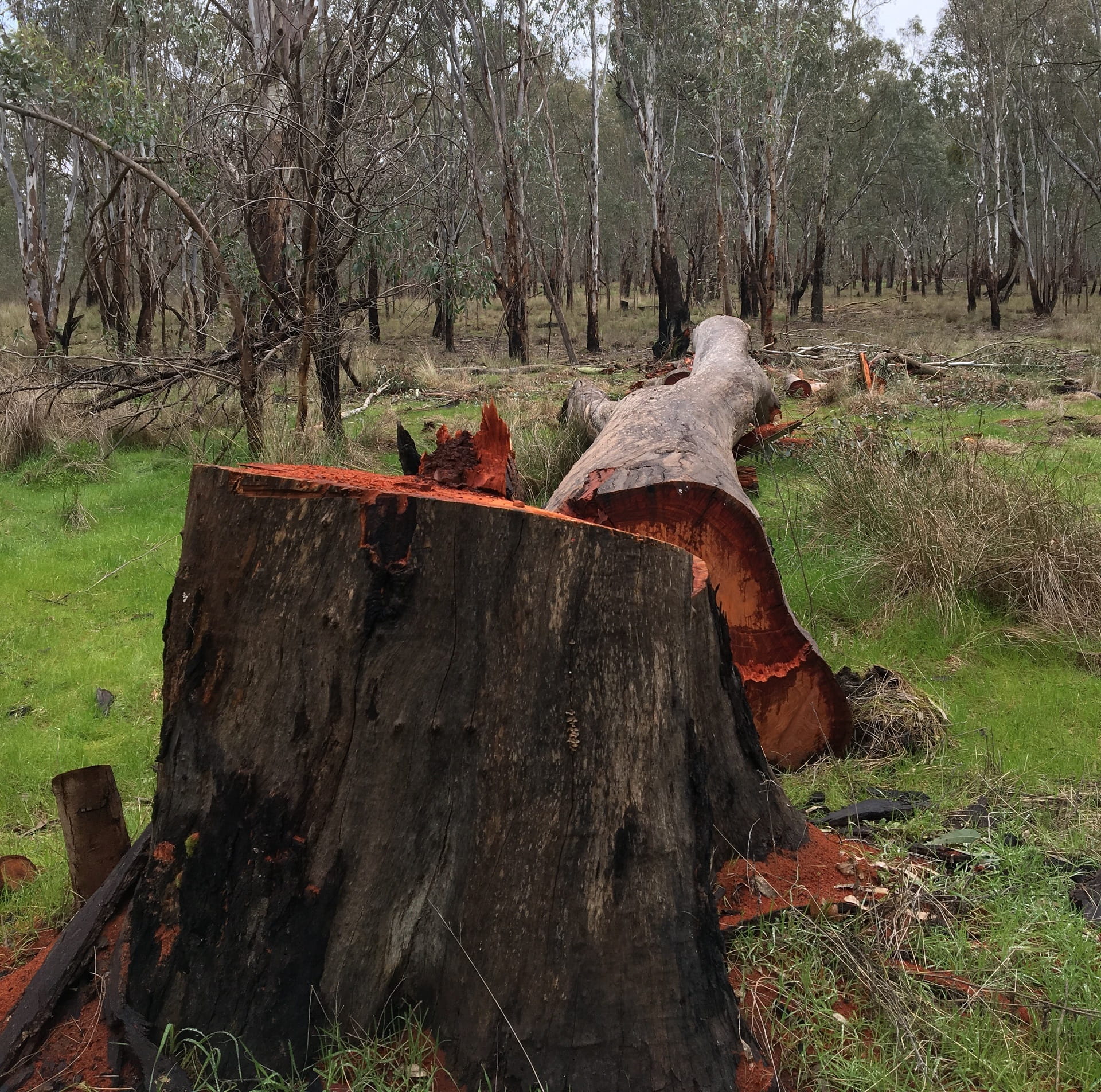
The bright red trunk of an older, illegally cut river red gum surrounded by younger trees in Lower Goulburn National Park - Parks Victoria
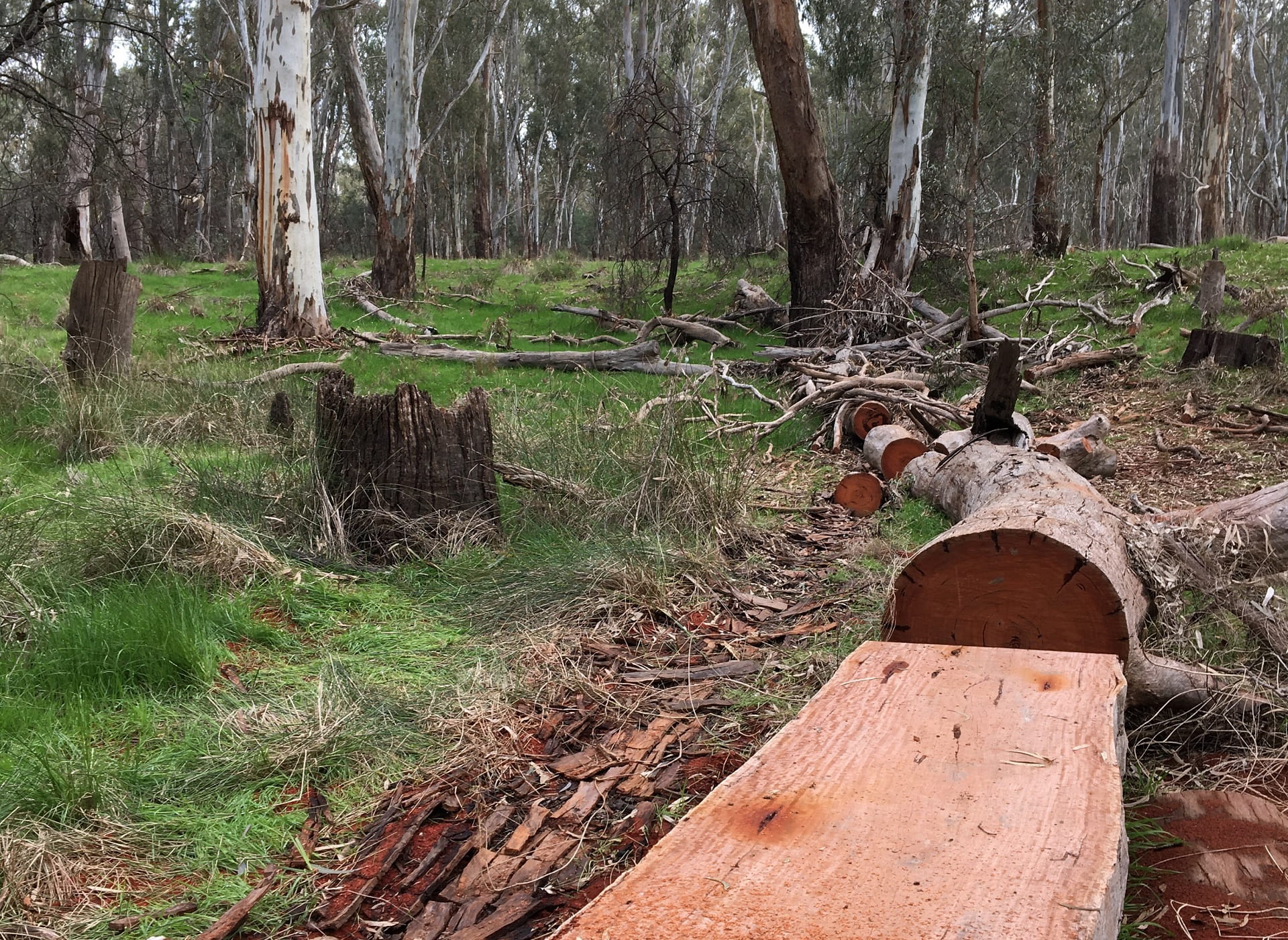
After filling their trailers or utes, thieves often discard illegally cut timber on the forest floor. This example is also from Lower Goulburn National Park - Parks Victoria
Dismantling illegal firewood trade
Further north past Echuca – well into the Murray River Reserve – is beloved Gunbower National Park. It is part of an Aboriginal cultural landscape that includes the traditional Country of the Yorta Yorta people.
Internationally recognised under the Ramsar Convention for its breathtaking display of river red gums and wetlands, it is home to a diverse range of habitats such as culturally significant sand dunes, creeks and open woodlands.
Species like the long neck turtle (Chelodina longicollis), diamond firetail (Stagonopleura guttata) and migrating rainbow bee-eater (Merops ornatus) rely on its sensitive sandy habitats for nesting. It is one of the few landscapes in the region where migratory birds from across the world – particularly waterbirds – rest, feed and breed.
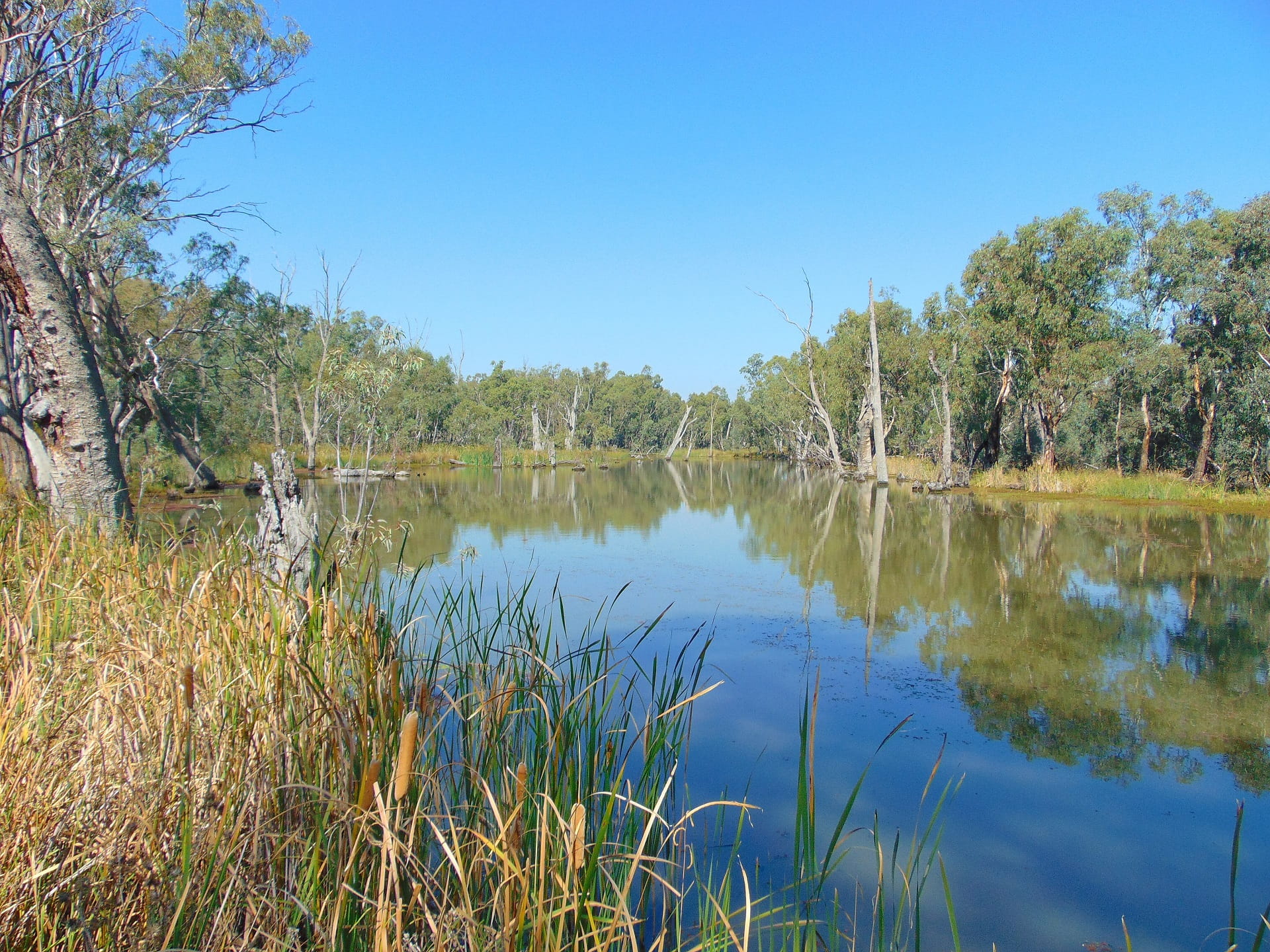
Gunbower Creek canoeing area in Gunbower National Park – Creative Commons
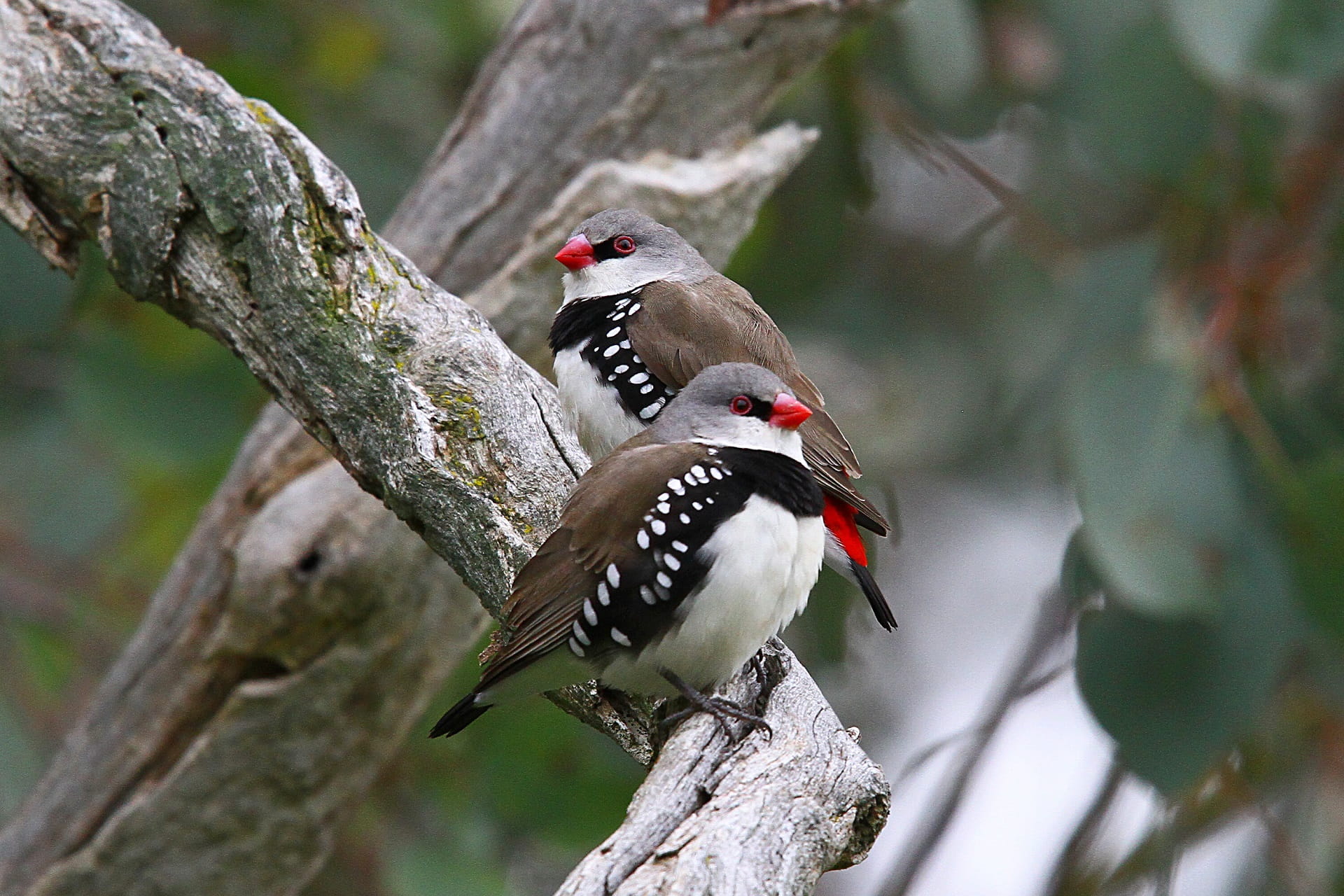
Diamond firetail (Stagonopleura guttata) perching on a branch – Museums Victoria
Ranger Team Leader for Cohuna, Ben Mannix, reckons he knows Gunbower like the back of his hand. He has been responsible for managing this special location for just under a year now.
“Like many parks nestled along the Murray River, it is a paradise for canoe and kayak enthusiasts, campers, bushwalkers and birdwatchers, as well as trail bike riders and four-wheel-drivers who enjoy experiencing the bush from our road network,” Ben says.
“However, it sits on a floodplain, meaning its waterways can dramatically swell and shrink. That makes this part of Victoria vulnerable to flooding and we copped some rough storms in late 2023, into the start of 2024. While visitor sites were heavily impacted, the river red gums loved the big drink.”
Unfortunately, reports of illegal and antisocial behaviour on public land spiked during these floods. Parks Victoria increased patrols to help protect local natural and cultural values.
Authorised Officers found an estimated 200 river red gums had been illegally felled and removed from Gunbower National Park over winter. Many of those taken were more than 100-years-old.
“I have come across situations where someone says they are just taking a trailer-load home for themselves, but three others caught that day said the same. It adds up,” Ben explains.
"The eucalyptus species being targeted, largely our river red gums, they just don't regenerate fast enough for this kind of illegal take to ever be sustainable.”
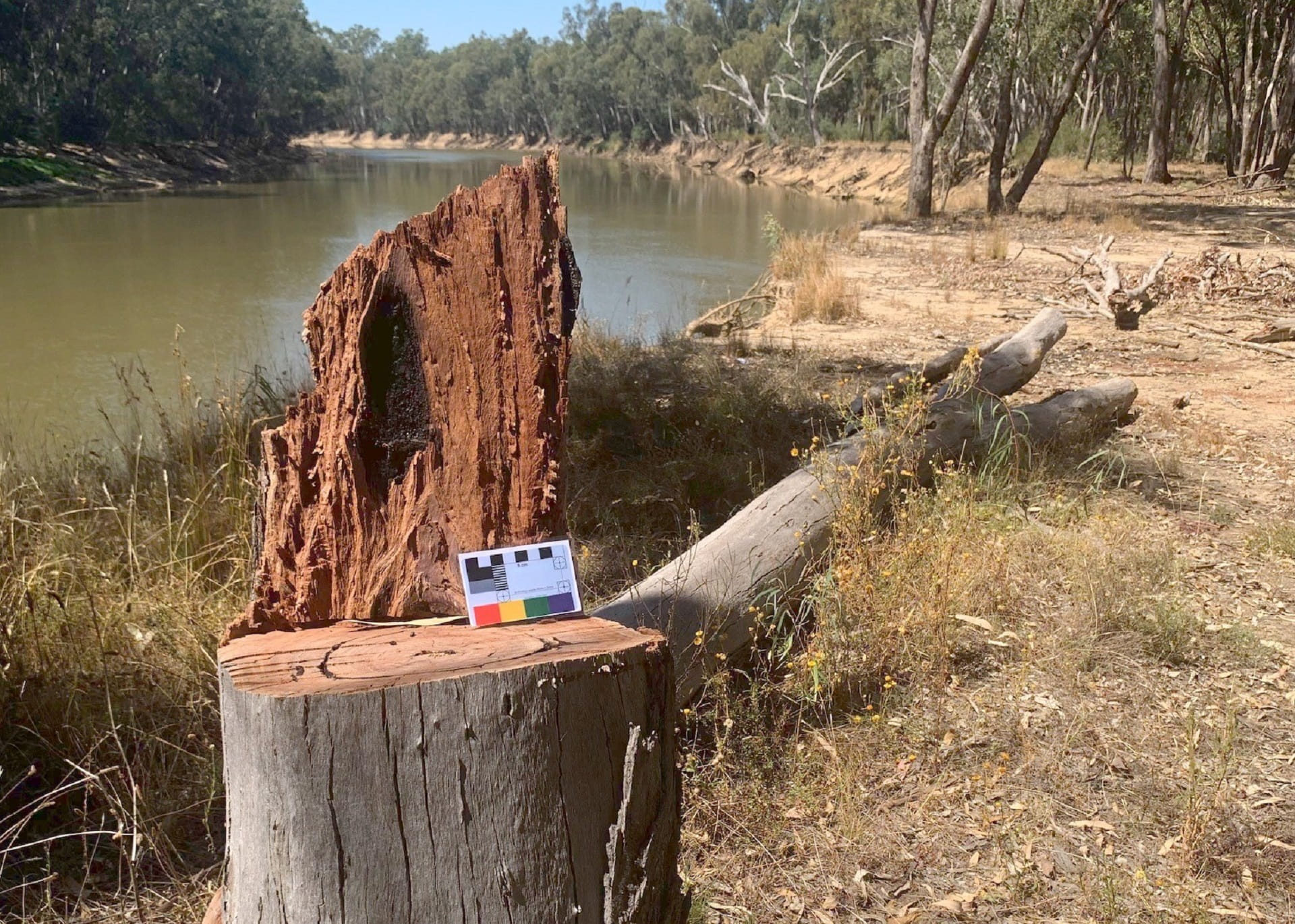
Recent example of illegal firewood theft by the Murray River in Gunbower National Park - Parks Victoria
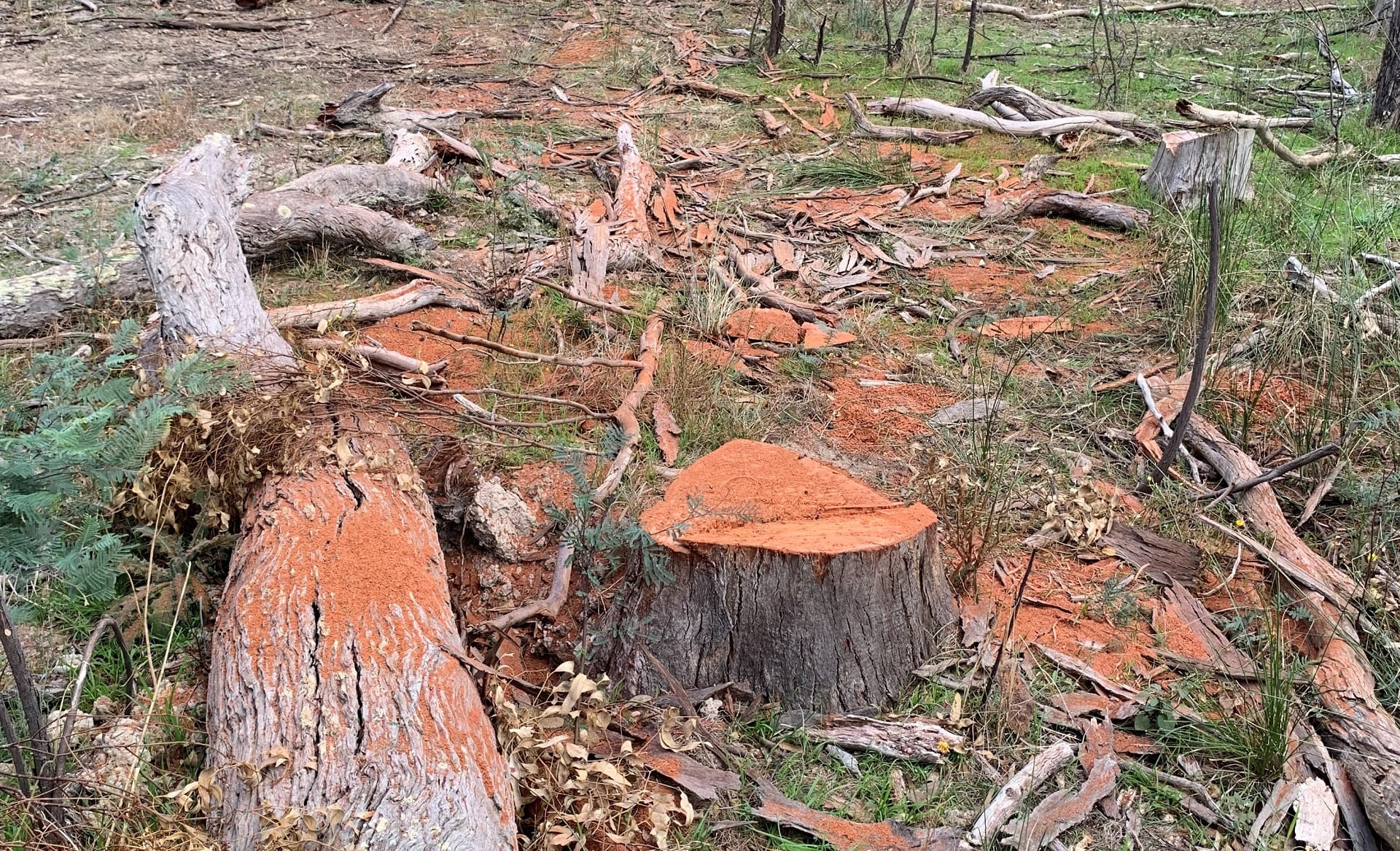
Further habitat destruction discovered by Authorised Officers within Gunbower National Park - Parks Victoria
River red gums have evolved to adapt to the ebb and flow of water – as long as it's not too dry or wet for too long. They can grow up to 45 metres tall and their trunks can be five metres wide.
“Ideally, these natives develop a canopy that can produce and drop millions of seeds after flowering. Ants and other insects take most of those seeds, and the ones that are left need to be dropped on the forest floor at just the right time to germinate. If seeds fall too early, before floods or heavy rain, they become submerged and die. If they fall too late, they don’t have enough time to grow before the dry heat of summer arrives,” Ben continues.
Thieves often take vehicles off-road illegally to get to larger trees, creating an abundance of unofficial, unmaintained and rutted tracks.
“We now have a mix of shallow and deep ruts throughout the park – caused by spinning tyres over wet soil and cars doing three point turns in the middle of the bush. There are large potholes in areas where people have gotten bogged and had to be winched or forced out,” Ben says.
“The bush has dried out after several hot summer days – it'll take a long time for it to rejuvenate and rehabilitate itself, even with our intervention.”
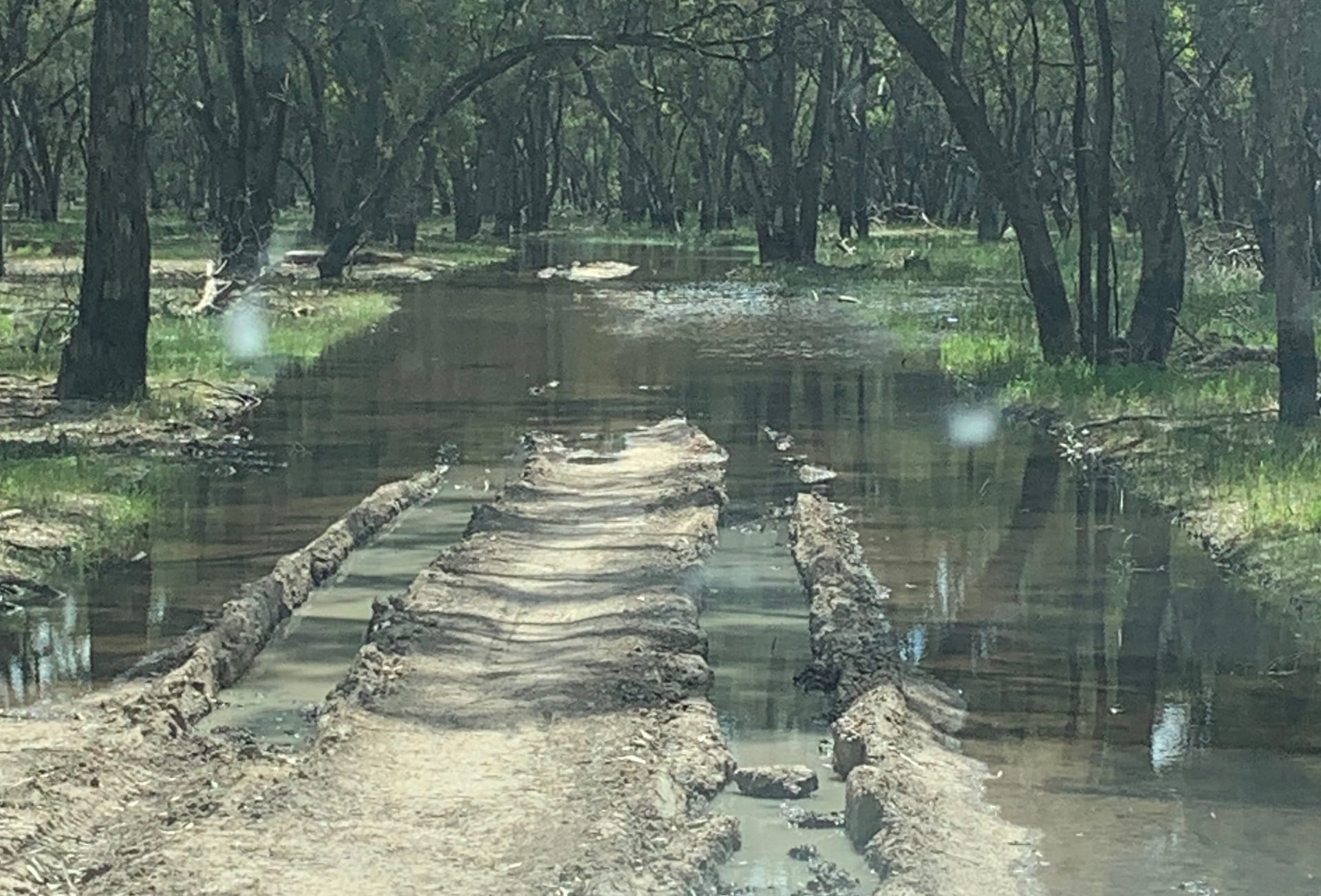
Deep ruts created by people driving illegally on fire management tracks in Gunbower National Park - Parks Victoria
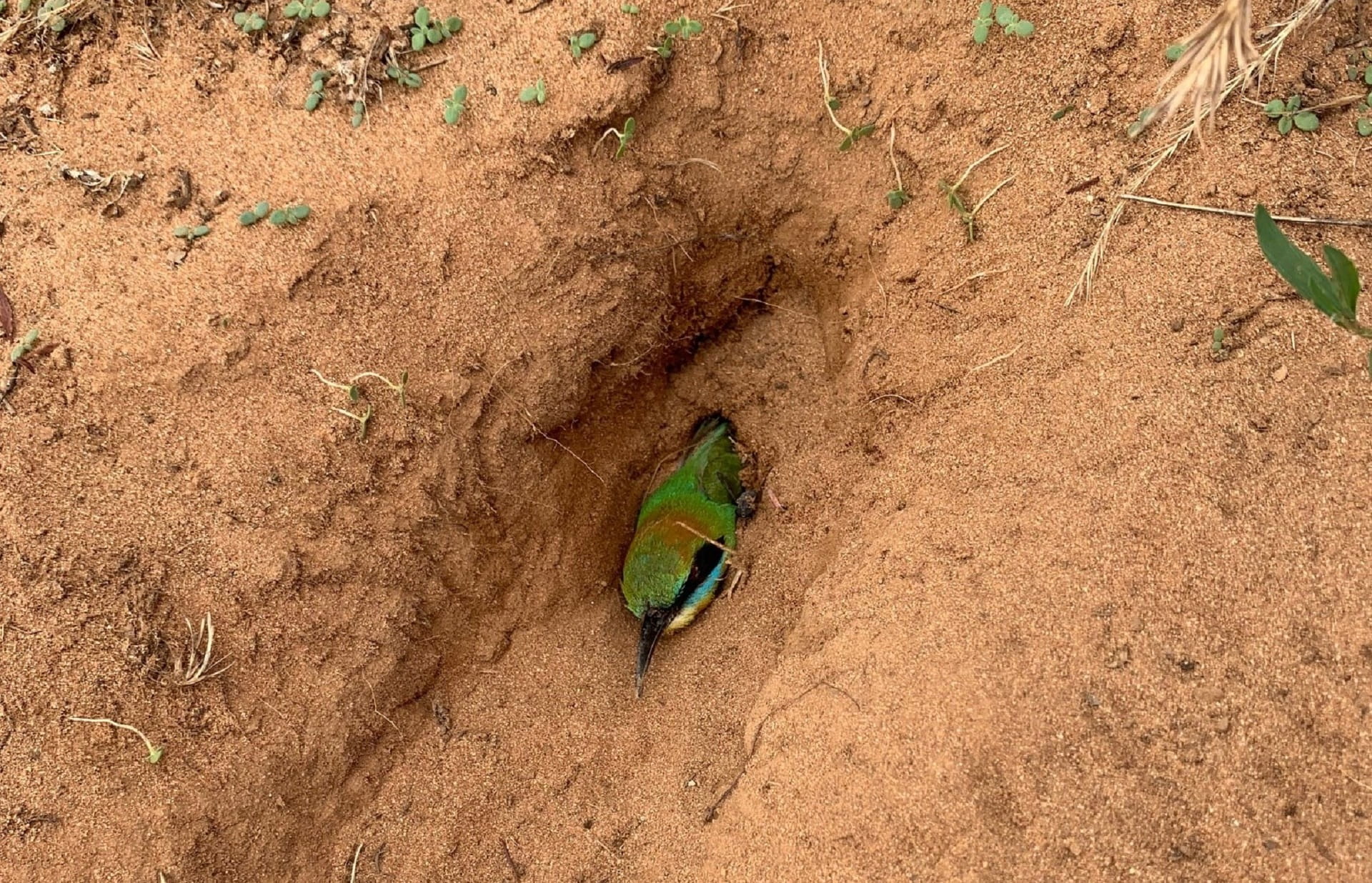
Rainbow bee-eater (Merops ornatus) nesting in sand dunes near Gunbower Camping Area in Gunbower National Park - Parks Victoria
Damaging standing and ground habitat puts species at risk of predation.
“If you ever want to see baby lorikeets, galahs or corellas – focusing your binoculars on stags at Gunbower can be a pretty good way to spot them. Hollows give them a good bit of habitat to fight against cold temperatures or rain overnight. If those habitat trees have been illegally cleared, they won’t last long,” Ben says.
“Our rainbow bee-eaters nest and hide within sensitive sand dunes – if those are destroyed by a vehicle, it makes it easier for invasive species such as feral foxes or cats to seek them out.”
“We also have a lot of emus nesting in the park and they’re much more skittish than usual. They’re known to be fierce protectors of their eggs and very territorial. Now, at any sound or sight of a human, they’re quick off the mark to run.”
How can you help?
We’re doing our bit to protect parks and reserves from illegal firewood theft. In partnership with the Conservation Regulator, Forest Fire Management Victoria, Victoria Police and local communities, we work to apprehend offenders and ensure prosecution to stop significant habitat loss and damage to Aboriginal scar trees.
But firewood theft is a statewide issue and we need your help.
It is illegal to cut down and remove trees from Parks Victoria land without authorisation. Victorians can legally collect free firewood for personal use from designated collection areas in state forests during the autumn and spring firewood collection seasons. Rules apply around where, when, what and how much wood can be collected.
These areas are managed by Forest Fire Management Victoria and firewood collection is regulated by the Conservation Regulator. Visit the Forest Fire Management Victoria website for more information.
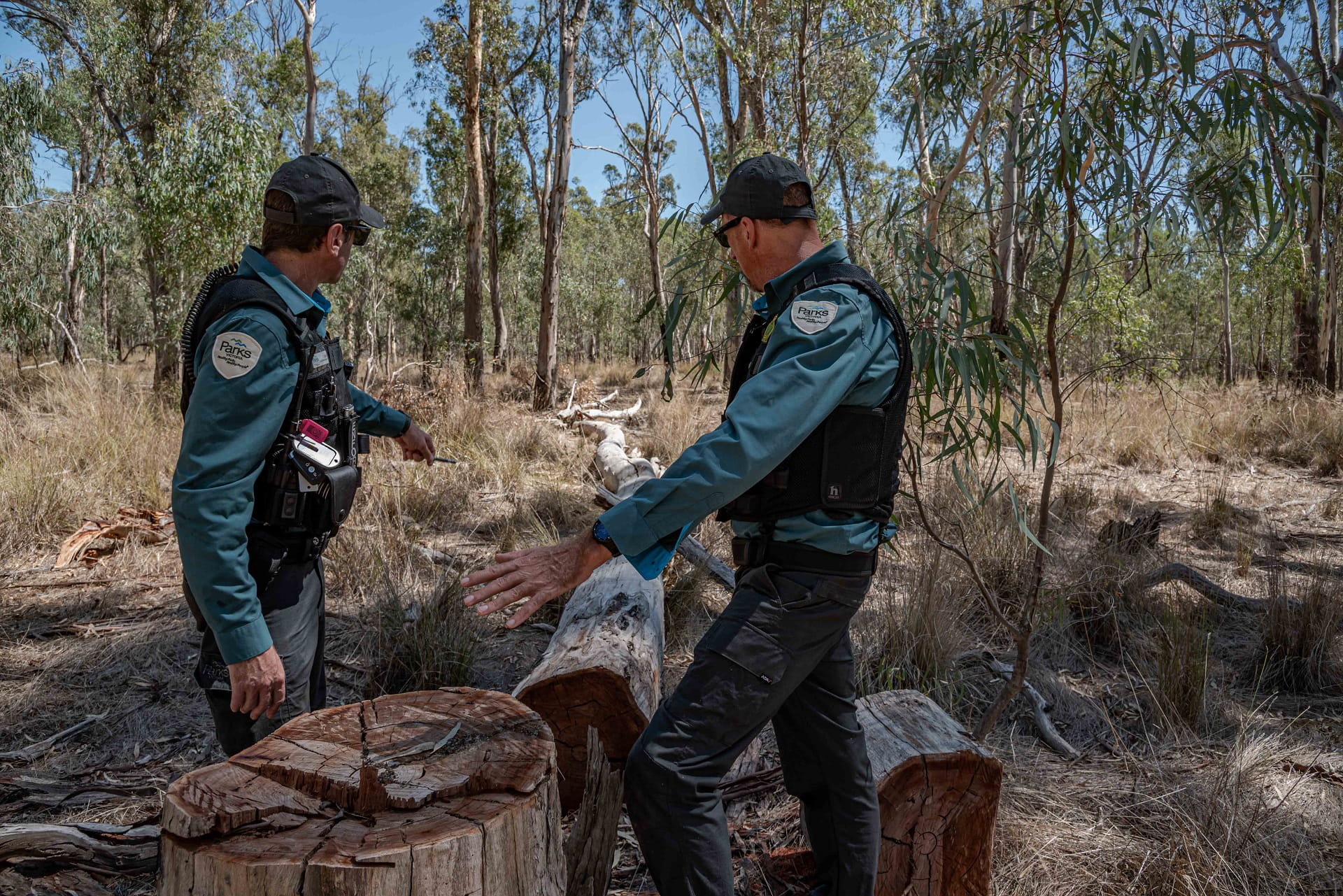
Parks Victoria Authorised Officers investigate illegal firewood theft on the lands of the Yorta Yorta people in Shepparton Regional Park – Jacque Quaine
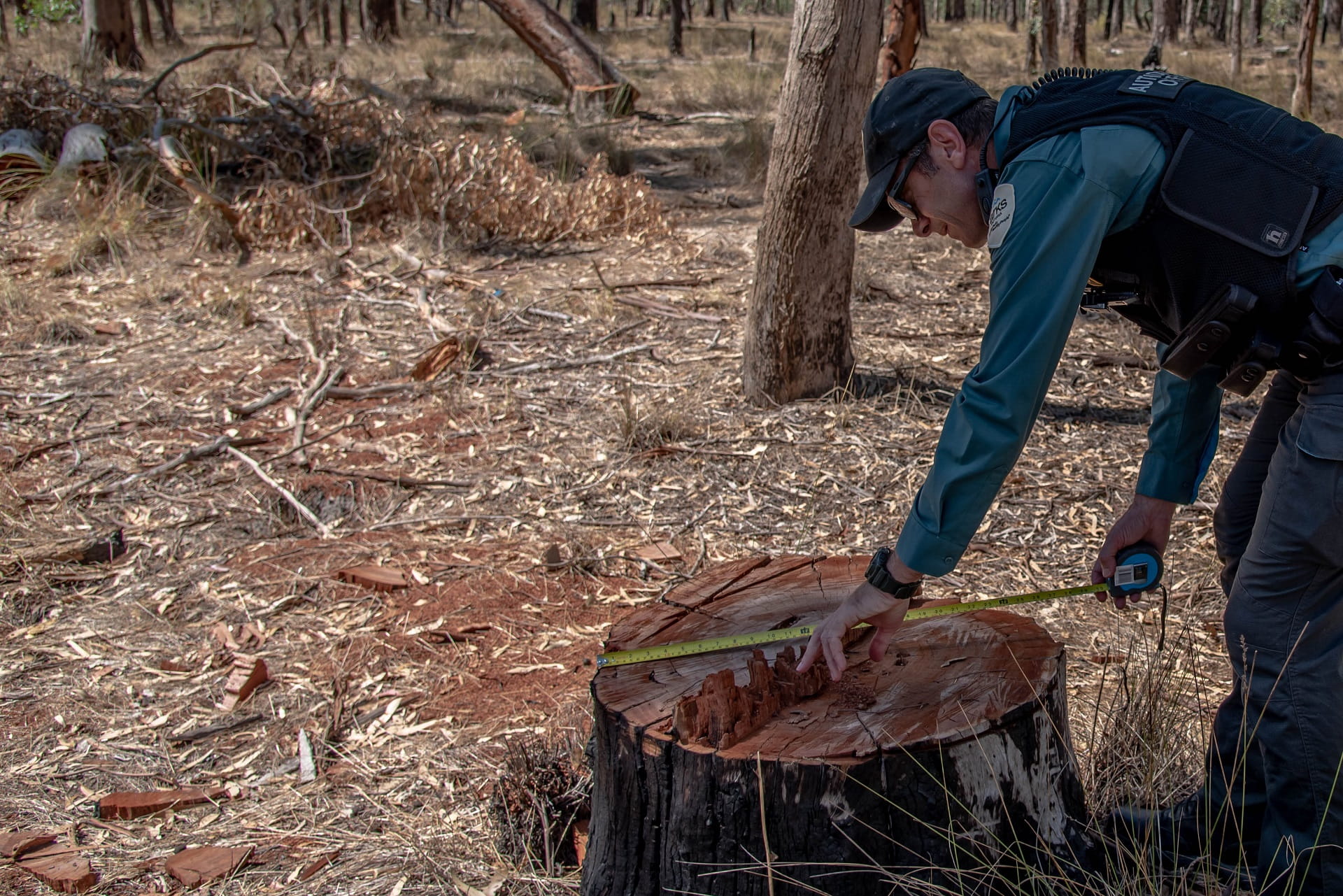
Parks Victoria Authorised Officer measures an illegally cut river red gum in Shepparton Regional Park – Jacque Quaine
What you buy also impacts the bush. To avoid inadvertently supporting the trade in illegal firewood, you should:
- ask your supplier where their wood is from
- request a tax receipt that includes a business name and ABN
- avoid buying from social media websites
- ask your supplier why their firewood might be too cheap
- visit the Conservation Regulator's website for more information and tips when buying firewood
“We know firewood is an important resource. If you are buying it through a supplier with a registered ABN, who can provide you with a receipt, you are one step closer to feeling confident about how that wood has been sourced,” Eloise adds.
“I also urge the general public to report any illegal activity to Parks Victoria on 13 1963, if it is safe to do so. Local information is one of our best assets in managing illegal firewood theft and disrupting its illegal trade,” Ben concludes.


